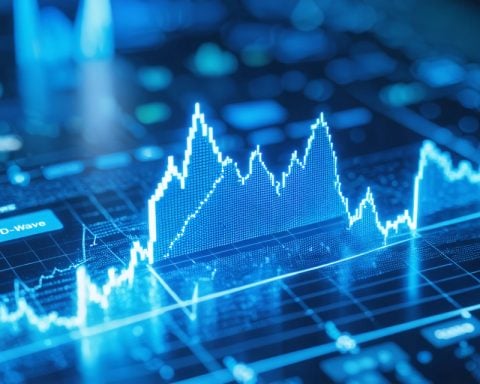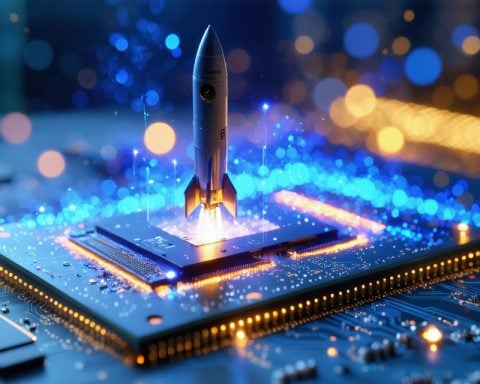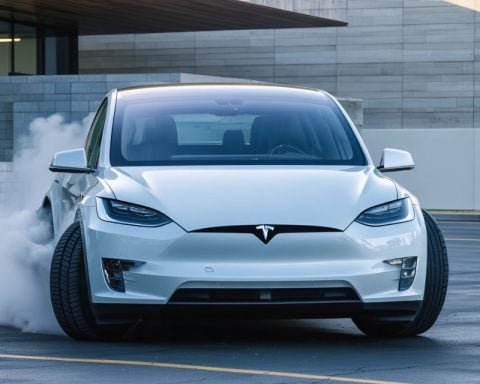Exciting developments are unfolding in the electric vehicle (EV) market as Hyundai introduces its 2025 Ioniq 5 Limited that features a native NACS port. Owners are now exploring Tesla Superchargers and discovering remarkable charging speeds.
The transition to the North American Charging Standard (NACS) is gaining momentum, with Tesla leading the way and several automakers, including VW and Honda, announcing compatibility. However, some brands, like Kia, are facing delays.
Hyundai has jumped into action with its new Ioniq 5, allowing drivers access to Tesla’s extensive Supercharger network. Users with the 2025 Ioniq 5 need to follow Tesla’s setup process for third-party vehicles, enabling them to charge efficiently at Supercharger stations.
In a recent head-to-head comparison, the Ioniq 5 impressed by charging slightly faster than the Tesla Model 3. The testing revealed that the Ioniq 5, despite a lower peak charge capability of 123 kW, boasts an extraordinary charging curve, enhancing its charging speed from 10% to 80% in just 18 minutes. This innovative design allows it to deliver more energy over a shorter duration than the Model 3, albeit with a smaller overall range.
While the charging speed was advantageous for Hyundai, the Model 3 maintained its efficiency and overall distance per charge, securing a win in a key practical metric—miles per minute. As the race for EV supremacy continues, Hyundai’s achievements mark a significant leap in the electric vehicle landscape.
Future of Electric Mobility: Societal and Environmental Implications
The rise of electric vehicles (EVs), exemplified by Hyundai’s Ioniq 5 and the integration of the North American Charging Standard (NACS), is reshaping our society, culture, and global economy in profound ways. As more manufacturers adopt NACS, the convergence of EV charging infrastructure could revolutionize the ownership experience for drivers across North America, enabling seamless access to expansive charging networks. This democratization of charging technology is likely to drive increased EV adoption, encouraging consumers to shift away from fossil fuel reliance, thus significantly reducing carbon emissions.
Long-term environmental benefits are also anticipated as the transition to EVs accelerates. According to the International Energy Agency, transitioning the global vehicle fleet to electric could cut global CO2 emissions by 1.5 billion tons per year by 2030. This shift not only helps mitigate climate change but also promotes public health benefits related to reduced air pollution in urban areas.
Future trends indicate a growing investment in renewable energy sources to power EV charging stations, which, if properly executed, can create a virtuous cycle of clean energy and transportation. As battery technology advances, future EVs will likely exhibit improved range and efficiency, further enhancing their appeal. The drive towards electrification symbolizes not merely a technological shift but a cultural transformation towards sustainability and environmental responsibility, setting the stage for a cleaner, greener future.
Hyundai’s 2025 Ioniq 5: A Game Changer in the EV Charging Experience
Introduction to the 2025 Hyundai Ioniq 5 Limited
The electric vehicle (EV) market is rapidly evolving, and Hyundai is making headlines with the introduction of its 2025 Ioniq 5 Limited. This innovative model features a native North American Charging Standard (NACS) port, allowing owners to access Tesla’s Supercharger network, which is known for its vast availability and impressive charging speeds.
Key Features of the 2025 Ioniq 5
– NACS Compatibility: One of the most significant upgrades in the 2025 Ioniq 5 is its compatibility with Tesla’s Supercharger network. This move opens up a plethora of charging options for Ioniq 5 owners, which is vital for long-distance travel.
– Impressive Charging Speeds: The Ioniq 5 boasts an exceptional capability of charging from 10% to 80% in just 18 minutes, thanks to its innovative charging curve. Although its peak charging capacity is lower than some competitors at 123 kW, its charging efficiency during use makes it competitive.
– Sustainability: As automotive manufacturers pivot towards sustainable practices, the Ioniq 5 represents Hyundai’s commitment to reducing its carbon footprint by promoting electric mobility.
Charging Experience: Tesla Superchargers
Owners of the 2025 Ioniq 5 must go through a specific setup process to utilize Tesla’s Supercharger stations, but once completed, they can enjoy rapid charging capabilities, making long-distance EV travel more feasible. This compatibility is part of a broader trend, as automakers like Volkswagen (VW) and Honda also begin adopting NACS technology.
Pros and Cons of the 2025 Ioniq 5
Pros:
– Access to an extensive Supercharger network
– Quick charging capabilities
– Modern design and technology integration
Cons:
– Lower peak charging capacity compared to some rivals
– Smaller overall range compared to competitors like the Tesla Model 3
Performance Comparison: Hyundai Ioniq 5 vs. Tesla Model 3
In a recent performance showdown, the Hyundai Ioniq 5 showcased its prowess by charging slightly faster than the Tesla Model 3, despite the latter’s superior efficiency and longer range per charge. The Ioniq 5’s unique charging curve allows for a quicker energy transfer, highlighting Hyundai’s innovative approach to EV technology.
Market Trends and Future Insights
The EV market is increasingly leaning towards standardization with NACS, driven by Tesla’s early adoption. This shift is expected to grow, with various manufacturers embracing this standard to streamline the charging experience for users.
As of now, many brands, including NASCAR sponsors like Kia, are trailing behind Hyundai in adopting this technology. However, with the continuing innovations and improvements in EV technology, the competition remains fierce.
Conclusion
Hyundai’s 2025 Ioniq 5 is not just a vehicle; it is a beacon of innovation in the electric vehicle landscape. With its ability to connect to the Tesla Supercharger network and rapid charging capabilities, this model stands to play a significant role as the automotive industry transitions towards more sustainable and efficient transport solutions.
For more on the latest trends and news in electric vehicles, visit Hyundai’s official site.


















